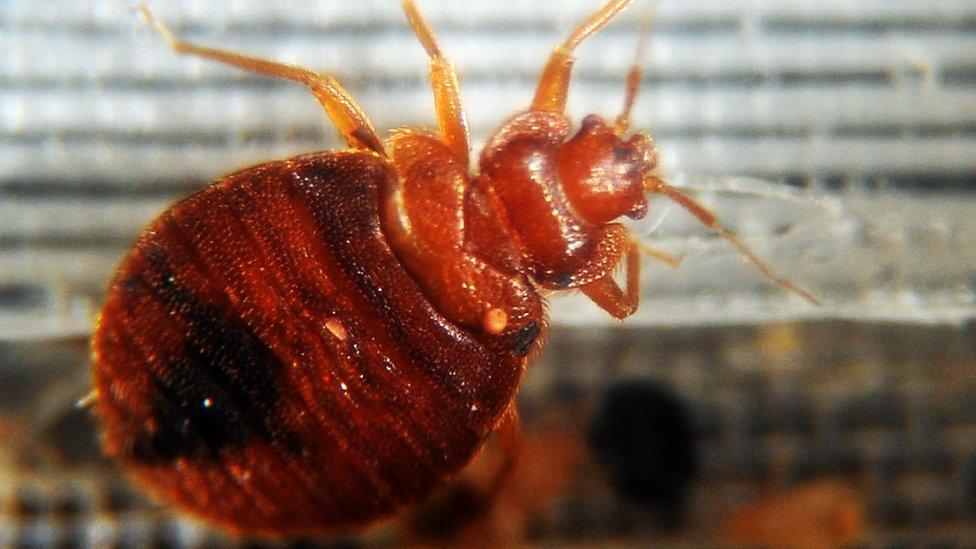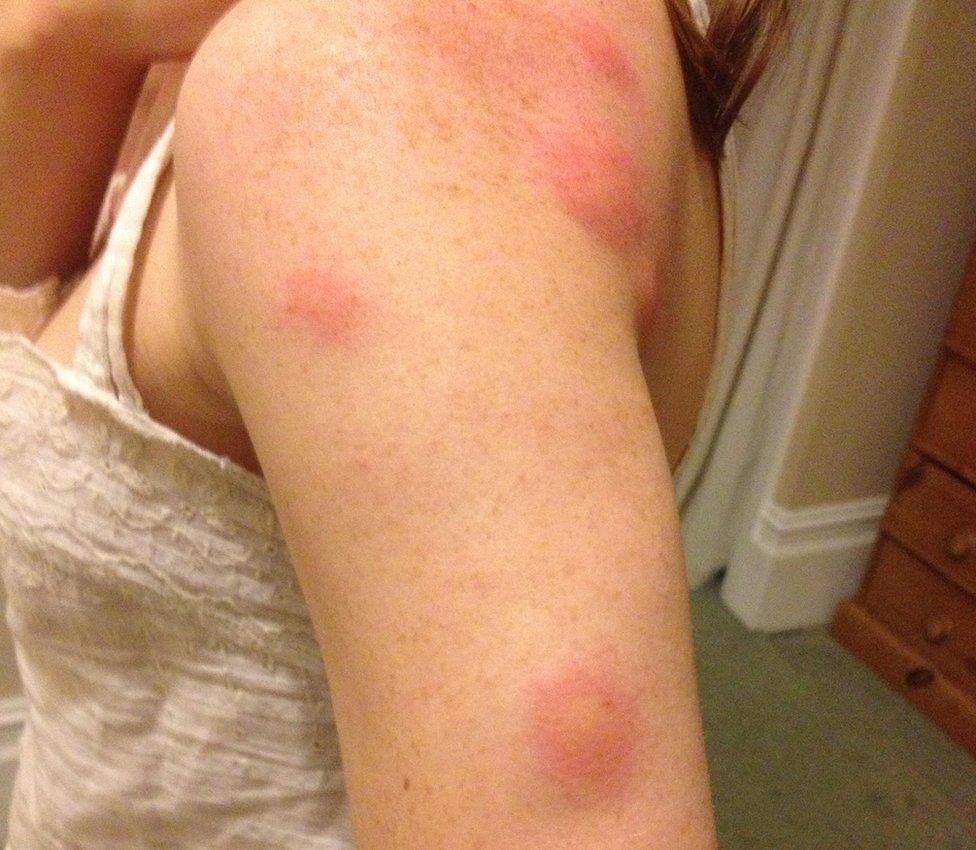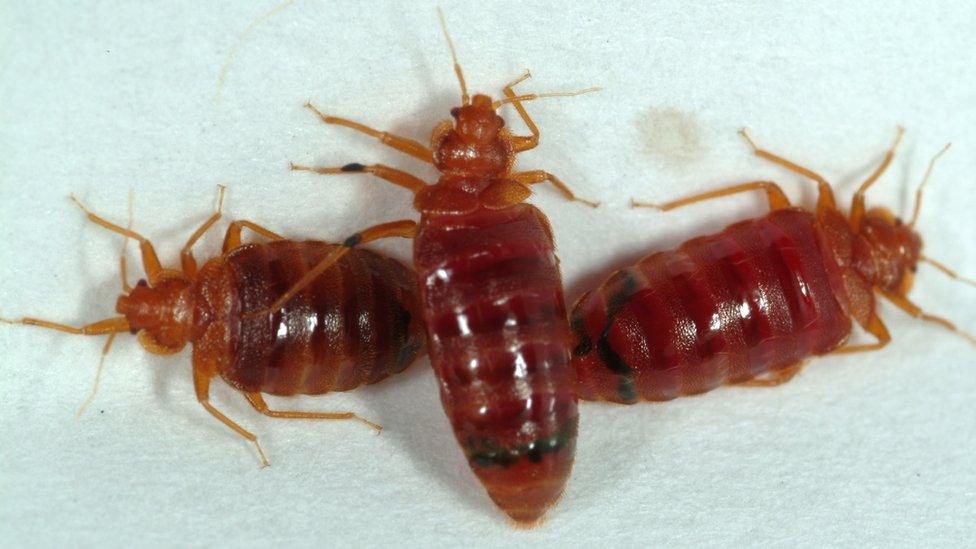Bed bugs develop resistance to widely used insecticides
- Published

Flightless bed bugs in the US have become resistant to the most widely used class of chemicals
A new study indicates that bed bugs in the US have developed resistance to neonicotinoids, the most widely used insecticide in the world.
Researchers found the blood sucking insects in Cincinnati and Michigan had "dramatic levels" of immunity to regular doses of the chemicals.
To kill these bugs required concentrations 1,000 larger than needed to eliminate non-resistant creatures.
The scientists say non-chemical methods of control now need to be considered.
Thanks to the increase in the global human population and the rapid expansion of international travel, the flat bodied bed bug has become a source of considerable irritation in hotel rooms all over the world.
Mainly active at night, the insects survive solely on blood and travellers often wake up with bite marks and red weals all over their bodies.
Infestations have spread to homes and offices and the bugs are extremely hard to get rid off once they gain a foothold; they can survive for up to a year without feeding and a single fertilised female can infect an entire apartment building.
Resistance rising
While they were a common part of life in the 1940s and 50s, the introduction of DDT and other powerful insecticides initially restricted their populations.
However by the 1960s the insects had developed resistance. They also became resistant to pyrethroids, the next class of chemicals used to control them.

The characteristic red weals caused by bed bug bites can be extremely itchy
Scientists have tried to bolster the impact of pyrethroids by mixing them with neonicotinoids.
These systemic poisons, external are the most widely used group of insecticides, especially in agriculture.
They have become controversial in recent years because many scientists believe they are having a detrimental impact on bees and other wildlife.
In this study, the researchers collected populations of bed bugs in Cincinnati and Michigan back in 2012 and exposed them to four different neonicotinoid insecticides.
They then compared these bugs to two other laboratory colonies - one kept for 30 years without exposure to insecticides, the other a pyrethroid-resistant group, collected in New Jersey in 2008.
It took just 0.3 nanograms of neonics to kill more than half of the 30 year colony - but it took around 10,000 nanograms to kill the same percentage of the recently collected insects.
Even though the New Jersey bugs were also collected before the introduction of neonics, they still showed moderate resistance to these chemicals, leading the scientists to believe that these insects can produce large quantities of an enzyme which helps to break down toxic substances.

Bed bugs have become a major headache for the global travel industry in the past 15 years
"The insects produce detoxifying enzymes, and they use them to detoxify and this is one of the mechanisms they might be using to counter the insecticide effect," said Dr Alvaro Romero, the lead author from New Mexico State University, speaking to BBC News.
"In this paper we found that the Jersey city and these other strains have elevated enzymes. This is one piece of evidence that we have that these might have a role, but we need to do more work," he added.
The researchers stress that although they have found significant levels of resistance to neonics in two locations that doesn't mean that bed bugs all over the US and the rest of the world are now immune from chemicals.
But they recognise that there is nothing new coming down the chemical pipeline right now.
New tools needed
With the short reproduction time of these insects, and their genetic ability to evolve resistance to poisons, the scientists are urging less reliance on chemicals as a means of control.
"We need to emphasis that we need to use different tools - we can't depend totally on chemicals we need to incorporate other alternatives," said Dr Romero.
"The pest control industry are incorporating new tools, heat, vapour, encasement, there are a bunch of these non-chemical methods that definitely help."
The scientists recognise and even admire the evolutionary ability of these creatures to rapidly overcome humanity's attempts to control them.
Dr Romero says the latest research indicates that the bugs are unlikely to be effectively controlled by chemical means in the near future.
"It's a very complex problem and we are going to have bed bugs for many years because of this problem with insecticides and then there is a social context that makes eradication and control very difficult."
The paper has been published in the Journal of Medical Entomology, external.
Follow Matt on Twitter, external.